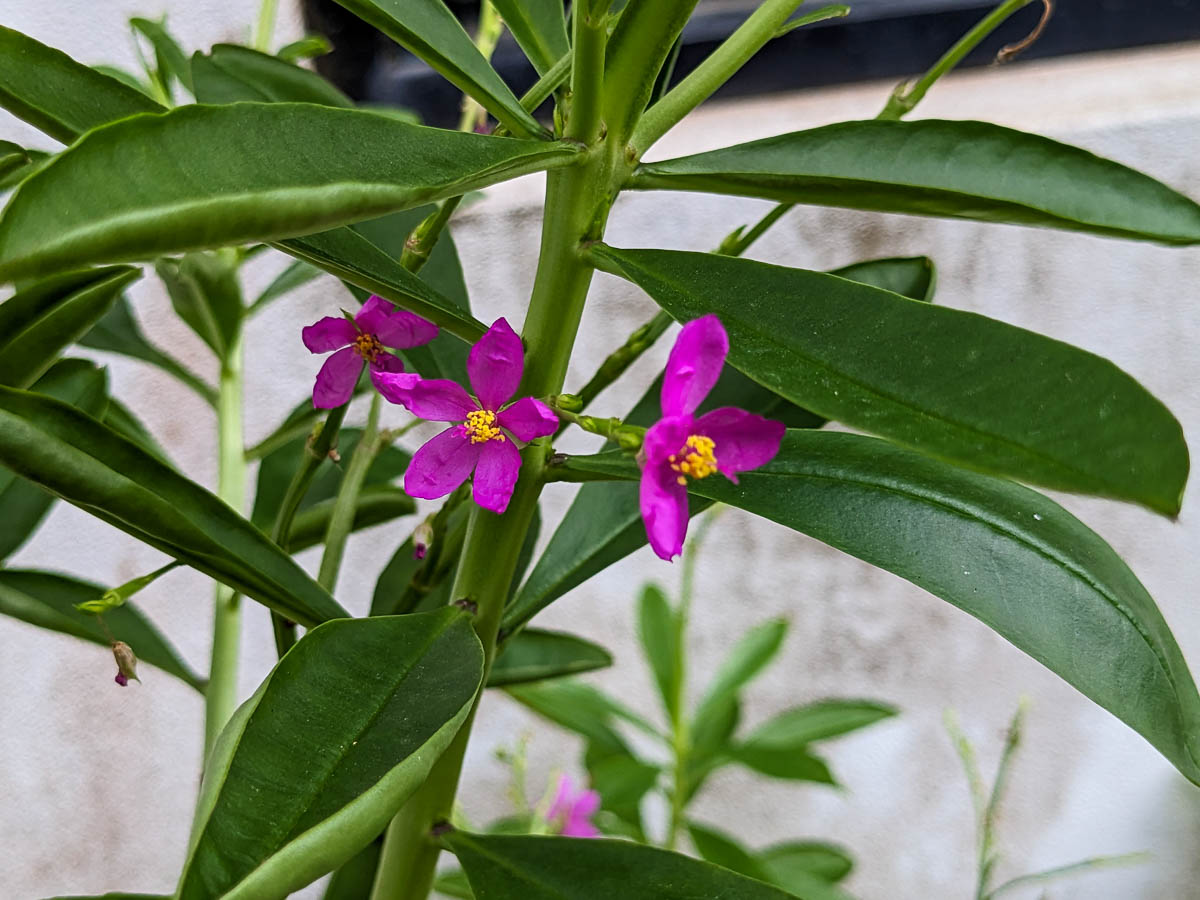Waterleaf
Waterleaf (Talinum triangulare)
Other common names: Surinum Purslane, Ceylon Spinach, Javan Spinach, Wild ginseng
_jacquelinechua.jpg)
Waterleaf is a hardy vegetable that also produces delicate pink flowers that attracts bees. Its leaves, stem and root can be eaten blanched, fried, or in stews.
An annual crop, this plant is often grown and consumed under 6 months. It can be used for crop rotation.
Sun and soil needs:

This plant needs about 4-8 hours of direct sunlight, or at least 6 hours of indirect sunlight.
Plants do best in pots with loamy soil at least 10cm deep, or in true ground. These plants are vulnerable to root rot, so ensure that your pots drain well, and that your soil has plenty of organic matter to let the roots breathe. Keep your plants cool with mulch and plenty of water to encourage growth.
Seed Sowing:
Seeds can be sown directly into pots or the ground around 15cm apart. Lightly water the soil until damp, once a day. Seeds should sprout within two weeks.
Growing:
Waterleaf is a rapid grower and generally does not need fertiliser, but it can be fed with high nitrogen fertilisers once a month to encourage leaf growth. Regular pruning will encourage additional growth and improve air circulation.
Harvesting:
Plants can be harvested for both older and younger leaves at any time but are typically harvested 2 months after sowing every 2 weeks for up to 6 months. They are typically harvested continuously via the cut-and-come-again method.
Seeds can be harvested for immediate planting when fruit pods are brown and dry.
Propagation:
Waterleaf can be grown from seed, but they are usually propagated via stem cuttings in soil or water.
Common problems & solutions:
This plant is relatively resistant to pests and disease if kept healthy.
Aphids, Mealy Bugs, and Whiteflies often infest the plant if it has underlying problems like repeated wilting from heat stress. Mechanical pest control methods like pruning the infested parts are the best methods for managing these pests in the short term, but resolving the underlying problem will prevent them in the long term.
Wilting leaves during hot weather is a sign of heat stress. Increase the number of times the plant is watered daily, or move it to a shadier part of the garden.

